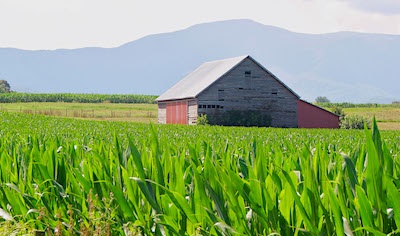
~ Press release issued by Virginia Farm Bureau
WASHINGTON — Congress has introduced a bill that would enable more farmers to participate in the Small Business Administration’s Paycheck Protection Program.
The Paycheck Protection for Producers Act—H.R. 7175 and S. 3918—would help more farmers participate in the Paycheck Protection Program. Congress has allocated a total of $659 billion for the PPP, and more than $120 billion still is available.
“Even as the economy gradually begins to reopen, farmers and ranchers continue to encounter enormous volatility as markets and supply chains rapidly react to the impact of the pandemic,” American Farm Bureau Federation President Zippy Duvall said in a letter thanking the bills’ sponsors.
While the PPP is providing vital assistance to farmers who have been able to receive loans, significant changes are necessary to allow many others to fully participate in the program, Duvall noted.
Under SBA rules, farmers’ participation in the PPP is based on 2019 net farm profits or losses. Based on 2017 IRS data, 37 percent of self-employed farmers would not have received a PPP loan because they reported prior year net losses. Program eligibility is based on returns filed for 2019, so the percentage of self-employed farmers receiving a zero-dollar loan could be higher following devastating natural disasters and trade troubles that continue to weigh negatively on farm income and cash receipts, according to AFBF.
Ben Rowe, national affairs coordinator for the Virginia Farm Bureau Federation, said that while farmers can apply for a PPP loan based on employee payroll costs, self-employed operators are not able to access the PPP to pay themselves if they do not show a net farm profit in 2019.
“Fortunately, H.R. 7175 and S. 3918 have been introduced to address these issues and would help more farmers participate in the Paycheck Protection Program and maintain the viability of their operations through the COVID-19 pandemic,” Rowe noted.
The proposed bill would help farmers and ranchers by allowing them to use their 2019 Schedule F gross income, up to $100,000, when calculating their PPP loan, rather than their 2019 net income. The bill also would allow farmers who received a PPP loan using their 2019 net income to recalculate their loan award using 2019 gross income if it would result in a larger loan amount.
Of the first $349 billion originally allocated to the PPP, “it’s estimated that just 1.3 percent, was distributed to the agricultural, forestry, fishing and hunting subsector,” Rowe said. The good news is that participation in the PPP does not impact a farmer’s ability to apply for the Coronavirus Food Assistance Program or any USDA farm program. “The PPP duplicate benefit provision does not have an impact on FSA farm programs or farm loan programs.”
Under previous PPP guidelines, loans had to be used within 8 weeks of getting the funds. That has been extended to 24 weeks. Also previously, for the loan to be forgiven, at least 75 percent of the costs had to come from payroll. The new version lowers that threshold to 60 percent. Farmers can apply for a PPP loan through Dec. 31—an extension from June 30.
RELATED ARTICLES
Grants available for local governments to support ag and forestry during COVID-19 crisis and beyond
USDA data shows sharp shift in agriculture trade due to COVID-19



Be the first to comment